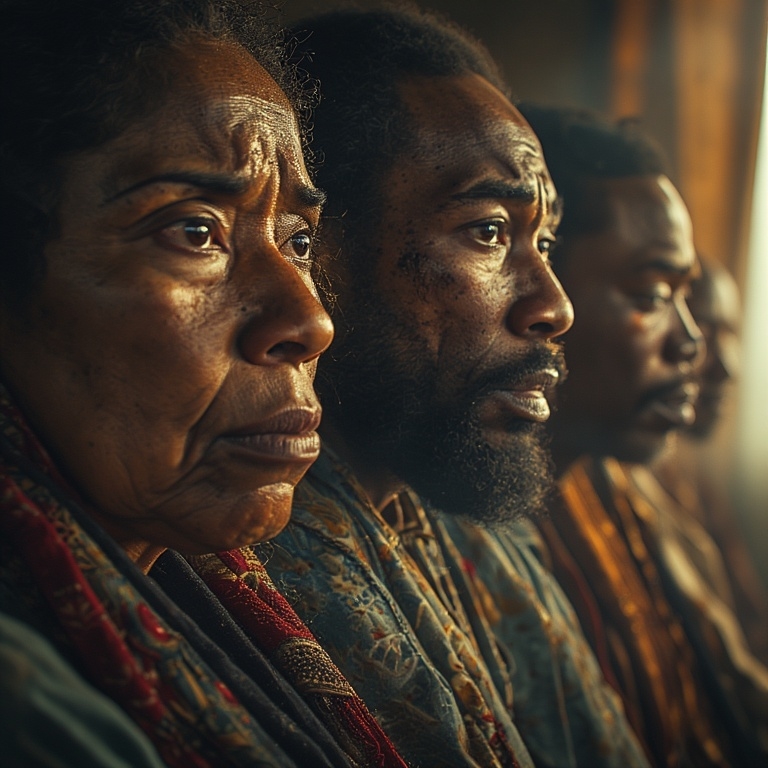
Somatic Imprints of Psychological Trauma
Psychological Trauma – Unraveling the Mind’s Response to Overwhelming Experience From Neurobiology to Identity—Mapping the Invisible Wounds of Trauma
The Unseen Gravity of Psychological Injury
Trauma is not simply an event—it is a disruption in the continuity of experience that reshapes the mind’s architecture. When the human psyche encounters overwhelming stress, it does not merely record the moment—it reorganizes itself around it. Psychological trauma results from experiences that exceed the brain’s capacity to process and integrate. These experiences leave behind not just memories, but physiological imprints and emotional distortions. The consequences are not confined to the moment—they ripple outward into behavior, relationships, and identity.
Trauma can be acute, chronic, or complex—each form carrying distinct psychological burdens. Acute trauma may stem from a single incident, while chronic trauma arises from prolonged exposure to distress. Complex trauma often involves interpersonal betrayal, especially during developmental years. Regardless of type, the psychological consequences are profound and multifaceted. Survivors may experience flashbacks, emotional dysregulation, dissociation, and identity fragmentation.
The mind’s response to trauma is not a failure—it is a survival strategy. These adaptations are protective, but they often come at the cost of peace and coherence. Understanding trauma requires a multidisciplinary lens—neuroscience, psychology, sociology, and lived experience all contribute to the picture. It examines the mechanisms of injury and the pathways to healing. The goal is not only to inform, but to foster empathy—to illuminate the invisible architecture of suffering and resilience.

Neurobiological Rewiring After Trauma
Trauma alters the brain’s architecture in ways that are both measurable and profound. The amygdala, which governs fear and threat detection, becomes hyperactive—primed to respond to danger even when none exists. The hippocampus, responsible for contextualizing memory, may shrink, impairing the ability to distinguish past from present. The prefrontal cortex, which regulates decision-making and impulse control, often shows reduced activity, making emotional regulation more difficult.
These changes are visible in neuroimaging studies and supported by decades of research. Trauma essentially reprograms the brain to prioritize survival over reflection. This rewiring explains why trauma responses can feel involuntary, irrational, or disproportionate. The brain’s plasticity means these changes can persist long after the traumatic event. Chronic trauma, especially in childhood, can lead to developmental delays and cognitive impairments.
The nervous system becomes sensitized, reacting to minor stressors as if they were life-threatening. This hypervigilance is exhausting and often misinterpreted as anxiety or paranoia. Neurobiological changes also affect sleep, appetite, and immune function. Trauma is not just psychological—it is physiological. Healing requires more than insight—it requires neurological recalibration.
Therapeutic approaches must address the brain’s altered pathways, not just the mind’s narratives. Modalities like EMDR, neurofeedback, and somatic experiencing are designed to engage these neural shifts. The brain’s response to trauma is adaptive—but not always beneficial. Rewiring the brain is not about erasing the past—it’s about restoring balance and agency.
Emotional Dysregulation and the Collapse of Internal Stability
Trauma destabilizes the emotional system, often leaving survivors unable to regulate their feelings in predictable or constructive ways. The nervous system, primed for threat, reacts with intensity to even minor stressors. Emotional responses may swing from numbness to rage, or from despair to hyperactivity, without clear external triggers. This volatility is not a personality flaw—it is a physiological consequence of trauma’s impact on brain function. The prefrontal cortex, which helps modulate emotion, is often underactive in trauma survivors, while the amygdala remains hypervigilant.
As a result, emotions may feel overwhelming, intrusive, or disconnected from context. Survivors frequently report feeling “too much” or “not enough”—trapped between emotional flooding and emotional shutdown. Shame, guilt, and fear often dominate the internal landscape, reinforcing cycles of self-blame and isolation. Emotional suppression becomes a survival strategy, but it also impairs intimacy and self-awareness. Suppressed emotions do not disappear—they manifest as physical symptoms, relational conflict, or compulsive behaviors.
Trauma also impairs the ability to name and understand emotions—a condition known as alexithymia. Without language for internal states, survivors may struggle to communicate their needs or make sense of their reactions. This can lead to misdiagnosis, misunderstanding, and further alienation. Emotional dysregulation affects every domain of life—work, relationships, health, and self-concept. It is exhausting, confusing, and often invisible to others.
Healing requires more than insight—it demands the rebuilding of emotional literacy and tolerance. Practices like mindfulness, dialectical behavior therapy, and expressive arts can help survivors reconnect with their emotional selves. These tools teach containment, expression, and compassion—skills often lost in the wake of trauma. Emotional regulation is not innate—it is learned, and trauma interrupts that learning. Recovery is possible, but it is gradual and nonlinear.
The goal is not emotional perfection—it is emotional coherence. Survivors must learn to feel without fear, to express without shame, and to trust their internal signals. Emotional dysregulation is a symptom of injury, not identity. With support, patience, and practice, stability can be restored. The emotional system, once fractured, can become a source of strength and clarity.

Fragmented Memory and the Disruption of Narrative Continuity
Trauma interferes with how memories are encoded, stored, and retrieved, often leaving survivors with fragmented recollections. Unlike typical memories, which are organized and contextualized, traumatic memories are frequently sensory-based and disjointed. Survivors may recall isolated sounds, images, or bodily sensations without a coherent timeline. This fragmentation is not a failure of memory—it is a protective adaptation by the brain. When an experience overwhelms the system, the brain prioritizes survival over integration.
The hippocampus, which helps situate memories in time and space, is often impaired during trauma. As a result, traumatic memories may lack sequence, clarity, or verbal structure. Survivors may experience flashbacks that feel like reliving the event in real time, rather than remembering it. These flashbacks are involuntary and can be triggered by seemingly benign stimuli. Emotional and somatic elements of the memory often persist, even when the narrative is inaccessible.
In some cases, memories may be repressed entirely, only to resurface years later. This delayed recall can be destabilizing, especially when it challenges previously held beliefs or relationships. Survivors may doubt their own recollections, particularly if others deny or minimize the trauma. This self-doubt compounds the psychological injury, eroding trust in one’s own mind. Fragmented memory also complicates therapy, as traditional talk-based approaches rely on coherent storytelling.
Healing requires methods that honor the nonverbal and nonlinear nature of traumatic memory. Modalities like EMDR, somatic experiencing, and expressive arts therapy can help integrate these fragments. The goal is not to force coherence, but to allow meaning to emerge organically. Memory is not static—it evolves with safety, reflection, and support. Reconstructing narrative continuity is an act of reclamation.
Survivors must be allowed to tell their stories in their own time, without pressure or judgment. The process of remembering is also a process of healing. Fragmented memory is not a sign of weakness—it is evidence of the mind’s attempt to protect itself. With care and patience, even the most disjointed memories can be woven into a meaningful whole. Trauma may disrupt narrative—but it does not erase truth.
Dissociation and the Displacement of Self
Dissociation is one of the most complex psychological responses to trauma—an adaptive mechanism that allows the mind to detach when the body cannot escape. It can manifest as feeling disconnected from thoughts, emotions, physical sensations, or even identity. Survivors often describe a sense of floating outside their bodies or watching their lives unfold from a distance. This detachment is not a flaw—it is a survival strategy designed to reduce the intensity of unbearable experience. In moments of extreme threat, dissociation protects the psyche from fragmentation.
However, when dissociation becomes chronic, it can interfere with daily functioning and relationships. Individuals may struggle to stay present, maintain continuity in their sense of self, or recall important details of their lives. Dissociation can range from mild spacing out to severe identity disruption, as seen in dissociative identity disorder. It is often misunderstood or misdiagnosed, especially when it mimics symptoms of depression or psychosis. The internal experience of dissociation is difficult to articulate, which adds to the isolation survivors often feel.
Trauma-induced dissociation is frequently linked to early developmental trauma, where escape was impossible and caregivers were sources of harm. In such cases, dissociation becomes a default mode of existence. Survivors may feel emotionally numb, chronically disengaged, or unable to connect with others. This can lead to feelings of alienation, confusion, and shame. Dissociation also affects memory, making it difficult to form coherent narratives or maintain a stable sense of time.
Healing from dissociation involves gently reestablishing connection with the body, emotions, and present moment. Somatic therapies, grounding techniques, and trauma-informed mindfulness practices are essential tools. The goal is not to eliminate dissociation entirely, but to understand its function and reduce its dominance. Survivors must learn to tolerate presence without fear—to inhabit their bodies and minds with safety. This process is slow, nonlinear, and deeply personal.
Therapists working with dissociation must proceed with caution, attunement, and respect for the survivor’s pacing. Trust must be rebuilt gradually, often through relational safety and embodied awareness. Dissociation is not a sign of weakness—it is evidence of the mind’s brilliance in protecting itself. With time and support, survivors can reclaim their sense of self and restore continuity in their experience. The journey from fragmentation to integration is one of the most profound paths in trauma recovery.

Identity Fragmentation and the Erosion of Selfhood
Trauma does not only affect how people feel—it alters who they believe they are. When the psyche is overwhelmed, the sense of self can fracture, leaving survivors unsure of their identity, values, or continuity. This fragmentation is especially pronounced in developmental trauma, where the self is still forming and the environment is unsafe. Children exposed to chronic neglect or abuse often construct adaptive personas to survive, suppressing authentic traits to meet external demands. These survival identities may persist into adulthood, creating internal conflict and confusion.
Survivors may feel alienated from their own bodies, emotions, or histories. They might describe themselves as hollow, invisible, or unreal—experiencing life as if through a fog. Identity fusion with the perpetrator is also common, especially in cases of prolonged abuse, where the survivor internalizes the abuser’s worldview. This can lead to self-blame, distorted morality, and difficulty distinguishing personal boundaries. Cultural and social identities may also be affected, particularly when trauma intersects with systemic oppression or marginalization.
The erosion of selfhood is not a moral failure—it is a psychological injury. Trauma forces the mind to prioritize safety over authenticity, often at the cost of coherence. Rebuilding identity requires more than introspection—it demands relational safety, creative exploration, and narrative reconstruction. Survivors must be given space to question, redefine, and reclaim who they are. Therapy can support this process, but it must be attuned to the survivor’s pace and complexity.
Healing identity fragmentation involves reconnecting with disowned parts of the self. This may include revisiting suppressed memories, reclaiming lost passions, or challenging internalized shame. Creative modalities like writing, art, and movement can help survivors express aspects of identity that words cannot reach. Community engagement and cultural reclamation also play a vital role in restoring belonging. The goal is not to return to a pre-trauma self, but to forge a new, integrated identity rooted in truth and agency.
Identity is not fixed—it is dynamic, resilient, and capable of transformation. Trauma may fracture the self, but it also reveals its depth and adaptability. Survivors are not broken—they are complex, layered, and evolving. With support and reflection, the fragmented self can become whole—not by erasing the past, but by integrating it. The reconstruction of identity is not just recovery—it is rebirth.
Attachment Wounds and the Breakdown of Relational Safety
Trauma often occurs within relationships, especially those meant to provide safety and care. When caregivers become sources of harm, the attachment system is disrupted at its core. Survivors may grow up without a stable template for trust, intimacy, or emotional attunement. This disruption is not just emotional—it is neurological, affecting how the brain encodes connection and threat. The result is often a disorganized attachment style, marked by confusion, fear, and ambivalence.
Survivors may oscillate between craving closeness and fearing it, unable to find comfort in relationships. They may become hypervigilant to rejection or betrayal, interpreting neutral cues as signs of danger. Others may withdraw entirely, convinced that isolation is safer than vulnerability. These patterns are not irrational—they are adaptations to relational trauma. When love and danger coexist, the mind learns to expect pain from connection.
Attachment wounds also affect self-worth, as survivors internalize the belief that they are unlovable or defective. This belief can lead to self-sabotage, codependency, or avoidance of intimacy. Relationships may feel unsafe, unpredictable, or exhausting. Even in adulthood, survivors may struggle to form secure bonds, repeating patterns learned in childhood. The nervous system remains primed for abandonment or enmeshment, making stability elusive.
Healing attachment wounds requires new relational experiences grounded in safety and consistency. Therapy can offer a corrective emotional experience, where trust is rebuilt slowly and respectfully. Peer support, mentorship, and community engagement also play vital roles in restoring relational capacity. Survivors must learn to distinguish past from present—to recognize that not all closeness leads to harm. This process is gradual and often painful, but profoundly transformative.
The goal is not perfect relationships—it is the ability to engage with others without fear dominating the interaction. Survivors must reclaim their right to connection, intimacy, and belonging. Attachment wounds are deep, but they are not permanent. With care, reflection, and support, relational safety can be restored. The capacity to love and be loved is not lost—it is waiting to be reawakened.

The Role of Shame in Psychological Injury
Shame is one of the most corrosive emotional consequences of trauma—an internalized belief that one is fundamentally flawed or unworthy. Unlike guilt, which focuses on actions, shame targets the self, embedding a sense of defectiveness that can persist for years. Survivors often carry shame silently, believing they deserved the harm or failed to prevent it. This belief is not rational—it is a psychological imprint left by betrayal, neglect, or violation. Shame thrives in secrecy, reinforced by silence and societal misunderstanding.
Trauma-induced shame can distort identity, impair relationships, and sabotage healing. It may manifest as self-criticism, perfectionism, or chronic self-doubt. Survivors might avoid intimacy, fearing exposure or rejection. They may struggle to assert boundaries, believing their needs are illegitimate. Shame also affects the body—tight muscles, collapsed posture, and shallow breathing often reflect its presence.
In cases of interpersonal trauma, especially abuse by trusted figures, shame is often transferred from perpetrator to victim. The survivor internalizes the abuser’s narrative, believing they are complicit or contaminated. This false belief becomes a psychological prison, limiting growth and expression. Shame can also be culturally reinforced, especially in communities that stigmatize vulnerability or prioritize silence over truth. The result is isolation, fragmentation, and emotional paralysis.
Healing shame requires exposure to compassion, truth-telling, and relational safety. Survivors must learn to separate their worth from their wounds—to recognize that shame is a symptom, not a verdict. Therapeutic approaches like compassion-focused therapy, somatic work, and narrative reconstruction can help dismantle toxic beliefs. Group support and peer validation are also powerful antidotes to shame’s isolating effects. The process is slow, requiring patience and repeated experiences of acceptance.
Shame cannot be reasoned away—it must be felt, witnessed, and transformed. Survivors must be allowed to speak without fear, to be seen without judgment, and to exist without apology. The goal is not to eliminate shame entirely, but to reclaim the self it obscures. Trauma may plant shame—but healing uproots it. In its place, survivors can cultivate dignity, clarity, and self-respect.
Hypervigilance and the Exhaustion of Constant Threat Scanning
Hypervigilance is a hallmark of trauma—a state of persistent alertness that keeps the nervous system locked in survival mode. Survivors often scan their environment for danger, even in safe settings, unable to relax or feel secure. This constant threat monitoring is not a choice—it is a conditioned response to overwhelming experiences. The brain, having learned that danger can strike without warning, remains primed to detect it at all times. The amygdala, responsible for threat detection, becomes overactive, while the prefrontal cortex struggles to regulate fear responses.
Hypervigilance affects sleep, concentration, and social engagement. Survivors may startle easily, avoid crowded places, or feel unsafe in silence. They may misinterpret neutral cues as hostile, leading to conflict or withdrawal. This heightened sensitivity is exhausting, both mentally and physically. The body remains tense, the mind overworked, and the emotional system strained.
Over time, hypervigilance can lead to burnout, anxiety disorders, and physical health issues. It also impairs decision-making, as the brain prioritizes threat over nuance. Relationships suffer, as loved ones may feel pushed away or misunderstood. Survivors may feel ashamed of their reactions, believing they are irrational or broken. But hypervigilance is not irrational—it is adaptive, even if maladaptive in peaceful contexts.
Healing requires teaching the nervous system that safety is possible. Grounding techniques, breathwork, and trauma-informed therapy can help recalibrate the threat response. The goal is not to eliminate vigilance, but to restore balance and discernment. Survivors must learn to differentiate past danger from present reality. This process is slow, requiring repeated experiences of safety and trust.
Hypervigilance is a symptom of injury, not identity. With support, survivors can reclaim calm, clarity, and connection. The nervous system, once trained for war, can learn peace. Recovery is not about forgetting danger—it is about remembering safety. In healing, vigilance becomes awareness—not fear.

Temporal Distortion and the Collapse of Time Perception
Trauma disrupts the brain’s ability to perceive and organize time, often leaving survivors feeling trapped in the past. The mind struggles to differentiate between memory and present reality, especially when triggered by sensory cues. This distortion is not a failure of cognition—it is a survival mechanism that prioritizes threat over chronology. The hippocampus, which helps situate events in time, is often compromised during trauma, contributing to this collapse.
Survivors may describe time as frozen, fragmented, or cyclical. Days blur together, and the future feels inaccessible or irrelevant. This can lead to hopelessness, disorientation, and difficulty planning or imagining change. Trauma compresses time around the moment of injury, making it the psychological center of gravity. Even years later, survivors may feel as though they never left the scene of the trauma.
Temporal distortion also affects memory retrieval, emotional regulation, and identity formation. Without a coherent sense of time, it becomes difficult to build narrative continuity or track personal growth. Survivors may feel stuck in developmental stages, unable to progress emotionally or relationally. This can lead to frustration, shame, and a sense of being “behind” in life. The pressure to “move on” often clashes with the brain’s inability to do so.
Healing requires restoring a sense of temporal agency—reconnecting past, present, and future. Rituals, storytelling, and structured reflection can help survivors reclaim time as a resource rather than a threat. Therapeutic approaches that emphasize pacing, sequencing, and integration are especially effective. The goal is not to erase the past, but to situate it within a broader, evolving narrative. Survivors must learn that the trauma is part of their story—not the whole of it.
Time is not just chronological—it is psychological, emotional, and symbolic. Trauma distorts time, but healing reclaims it. Survivors can learn to inhabit the present without fear, remember the past without collapse, and imagine the future without dread. The restoration of time perception is not just cognitive—it is existential. It allows survivors to re-enter life with continuity, purpose, and hope.
The Silencing of Expression and the Loss of Voice
Trauma often robs individuals of their ability to express themselves freely and coherently. The overwhelming nature of traumatic experience can shut down language centers in the brain, making verbal articulation difficult or impossible. Survivors may struggle to describe what happened, how they feel, or what they need. This silence is not a choice—it is a neurological and emotional consequence of injury. The body remembers what the mouth cannot say.
Expression is further complicated by shame, fear of disbelief, and cultural pressures to remain quiet. Many survivors internalize the message that speaking out will lead to rejection or punishment. This leads to self-censorship, emotional suppression, and isolation. The longer expression is withheld, the more entrenched the silence becomes. Over time, the inability to speak can feel like a loss of identity.
Trauma also affects creative expression—art, music, writing, and movement may feel inaccessible or unsafe. Survivors may fear that expressing themselves will unleash uncontrollable emotions or expose vulnerability. Yet creativity is often the key to unlocking what words cannot reach. Nonverbal expression allows the psyche to process trauma symbolically, bypassing the need for linear narrative. This is why expressive arts therapies are so powerful in trauma recovery.
Reclaiming voice is not just about speaking—it is about being heard, believed, and respected. Survivors must be given safe spaces to explore their stories without pressure or judgment. The process may begin with fragments, metaphors, or gestures before evolving into coherent language. Therapists, advocates, and communities play a vital role in validating and amplifying survivor voices. Silence must be met with curiosity—not coercion.
Expression is a form of agency—it allows survivors to shape their own narratives rather than being defined by others. The restoration of voice is a political, psychological, and spiritual act. It challenges systems of oppression and rewrites internal scripts of shame. Survivors do not owe anyone their story—but they deserve the right to tell it. Trauma may silence—but healing speaks.

Collective Trauma and the Weight of Shared Wounds
Trauma is not always individual—it can be collective, affecting entire communities, cultures, or generations. Events like war, genocide, colonization, systemic racism, and pandemics leave psychological imprints that transcend personal experience. These shared wounds shape identity, memory, and belonging, often becoming embedded in cultural narratives and social structures. Collective trauma alters how groups perceive safety, justice, and possibility. It influences parenting, education, governance, and even language.
The psychological consequences of collective trauma are layered and enduring. Individuals within traumatized communities may carry both personal and inherited pain. Intergenerational transmission occurs through stories, behaviors, and biological mechanisms like epigenetics. Children may absorb fear, silence, or hypervigilance without knowing the original source. This creates a legacy of suffering that can feel invisible yet omnipresent.
Collective trauma also affects cohesion and trust within communities. It can lead to fragmentation, internalized oppression, or cycles of violence. Marginalized groups often face compounded trauma—both from historical injustice and ongoing systemic harm. Healing requires acknowledgment, truth-telling, and reparative action. Denial or minimization only deepens the wound.
Cultural rituals, storytelling, and communal mourning are essential tools for processing collective trauma. These practices allow communities to grieve, remember, and reclaim agency. Art, activism, and education also play vital roles in transforming pain into purpose. Healing is not just psychological—it is political, relational, and spiritual. It demands structural change as well as emotional repair.
Survivors of collective trauma must be seen not only as individuals, but as carriers of history. Their resilience is a testament to the strength of culture, community, and spirit. Recovery is possible—but it must be collective, inclusive, and sustained. The goal is not to erase the past, but to honor it while building a more just and compassionate future. Collective trauma may shape identity—but it does not define destiny.
Post-Traumatic Growth and the Emergence of Meaning
While trauma often leaves deep psychological scars, it can also catalyze profound transformation. Post-traumatic growth refers to the positive psychological changes that can emerge in the aftermath of adversity. This growth is not a silver lining or a justification for suffering—it is a testament to human resilience. Survivors may develop greater empathy, clarity of values, or a deeper sense of purpose. These shifts do not erase pain—they coexist with it.
Growth often begins when survivors confront the reality of their trauma and begin to integrate it into their identity. This process requires safety, reflection, and support—not pressure or forced optimism. Survivors may reevaluate relationships, pursue new goals, or engage in advocacy. They may find strength in vulnerability, wisdom in reflection, and connection in shared experience. Post-traumatic growth is not linear—it unfolds in cycles, often alongside grief and struggle.
The emergence of meaning is central to this transformation. Survivors may ask why the trauma occurred, what it changed, and how they can respond. These questions are existential, not just psychological. Meaning-making allows survivors to reclaim agency and rewrite their narratives. This does not negate the trauma—it reframes it within a broader context.
Therapists can support post-traumatic growth by validating pain while nurturing possibility. Practices like journaling, storytelling, and spiritual exploration can deepen insight. Community support and peer mentorship also foster growth through shared wisdom. Survivors must be allowed to define growth on their own terms—not according to external expectations. The goal is not perfection—it is authenticity.
Post-traumatic growth is not about becoming someone new—it is about becoming more fully oneself. It honors the complexity of healing, the coexistence of pain and strength. Trauma may fracture identity, but growth can forge a deeper, more integrated self. Survivors are not just wounded—they are evolving. In the aftermath of trauma, meaning is not given—it is created.

The Body Remembers—Somatic Imprints of Psychological Trauma
Trauma is not confined to the mind—it lives in the body, shaping posture, breath, and sensation long after the event has passed. Survivors often carry physical tension, chronic pain, or unexplained symptoms that reflect unresolved emotional injury. The nervous system, conditioned by threat, remains in a state of hyperarousal or collapse. Muscles tighten, digestion slows, and breathing becomes shallow—not because of physical illness, but because the body is bracing for danger. These somatic imprints are not imagined—they are real, measurable, and deeply disruptive.
The body stores trauma in ways that bypass conscious awareness. Survivors may flinch at touch, freeze during conflict, or feel numb in moments of intimacy. These reactions are automatic, rooted in the body’s memory of harm. Traditional talk therapy may not reach these layers, which is why somatic approaches are essential. Modalities like sensorimotor psychotherapy, somatic experiencing, and trauma-informed yoga help reconnect the body and mind.
Healing requires learning to listen to the body’s signals without fear or judgment. Survivors must relearn what safety feels like—not just intellectually, but physically. This involves grounding, breathwork, and gentle movement that restores agency. The goal is not to control the body, but to collaborate with it. Somatic healing is slow, nonlinear, and deeply personal.
The body’s wisdom is profound—it knows what the mind cannot articulate. By honoring physical sensations, survivors can begin to release stored trauma and reclaim vitality. This process often brings up grief, rage, or fear that was previously inaccessible. But it also opens pathways to joy, connection, and embodiment. Trauma may silence the body—but healing gives it voice.
Survivors are not broken—they are carrying stories in muscle, breath, and bone. The body is not the enemy—it is the archive of survival. With care and attunement, somatic healing becomes a gateway to integration. Trauma may live in the body—but so does resilience. Recovery is not just mental—it is physical, relational, and sacred.
The Social Mirror—How Trauma Alters Interpersonal Perception
Trauma doesn’t just affect how survivors feel—it reshapes how they interpret others. The social world becomes a mirror distorted by fear, betrayal, and hypervigilance. Survivors may misread neutral expressions as threatening or interpret kindness as manipulation. These distortions are not delusions—they are protective adaptations rooted in past harm. When trust has been violated, the brain learns to anticipate danger in every interaction.
This altered perception can lead to isolation, conflict, or chronic miscommunication. Survivors may withdraw from relationships or become overly accommodating to avoid rejection. They might struggle with boundaries, unsure when to assert or retreat. The nervous system remains on alert, scanning for cues that echo past trauma. Even safe relationships can feel unsafe when viewed through a trauma lens.
Social anxiety, paranoia, or emotional numbing often emerge as coping mechanisms. These responses are not signs of weakness—they are evidence of injury. Trauma teaches the mind to expect harm, even when none is present. Healing requires recalibrating the social mirror—learning to see others as they are, not as they were in moments of danger. This process is slow and requires repeated experiences of relational safety.
Therapy can help survivors explore these distortions and develop new relational templates. Group work, peer support, and embodied practices also foster interpersonal healing. Survivors must learn to tolerate closeness without fear and navigate conflict without collapse. The goal is not perfect perception—it is flexible, grounded awareness. Trauma may warp the social mirror—but healing polishes it.
With time, survivors can rebuild trust—not just in others, but in their own instincts. They learn to distinguish past from present, projection from reality. Relationships become spaces of growth rather than reenactment. The social mirror, once shattered, can reflect truth again. In healing, connection becomes possible—not as a threat, but as a gift.

The Spiritual Void—Trauma’s Impact on Meaning and Belief
Trauma often shakes the foundations of spiritual belief, leaving survivors questioning purpose, justice, and existence itself. When suffering feels senseless, faith can fracture. Survivors may feel abandoned by a higher power or betrayed by the moral order they once trusted. This spiritual void is not just philosophical—it is existential. It touches the deepest layers of identity and orientation.
Some survivors lose faith entirely, while others cling to belief systems that offer structure or hope. Still others reconstruct their spirituality from the ground up, integrating trauma into a new worldview. The process is deeply personal and often nonlinear. Spiritual disillusionment can lead to despair, cynicism, or emotional numbness. But it can also spark inquiry, transformation, and renewal.
Trauma challenges the notion of a predictable universe. It forces survivors to confront randomness, injustice, and mortality. These confrontations can feel destabilizing, but they also open space for deeper reflection. Survivors may explore new philosophies, rituals, or communities in search of meaning. They may redefine divinity, morality, or sacredness in ways that honor their experience.
Healing the spiritual void involves reclaiming agency over belief. Survivors must be allowed to question, grieve, and rebuild without pressure or dogma. Practices like meditation, nature immersion, and contemplative writing can support this journey. Spiritual trauma is real—and it deserves recognition and care. The goal is not to restore old beliefs, but to cultivate authentic ones.
Faith, when reimagined, can become a source of resilience rather than repression. Survivors may find strength in paradox, beauty in brokenness, and connection in mystery. The spiritual void, once feared, becomes fertile ground for growth. Trauma may shatter meaning—but healing reclaims it. In the aftermath, belief is not inherited—it is chosen.
The Role of Environment—Contextualizing Trauma’s Impact
Trauma does not occur in a vacuum—it is shaped by the environment in which it unfolds. The context of trauma influences how it is experienced, interpreted, and remembered. Factors like socioeconomic status, cultural norms, family dynamics, and institutional support all play a role. A traumatic event in a supportive environment may be buffered, while the same event in a hostile or neglectful setting can be magnified. The presence or absence of safety, validation, and resources determines the trajectory of psychological injury.
Environmental factors also affect access to healing. Survivors in marginalized communities may face barriers to care, stigma, or systemic neglect. Trauma compounded by poverty, racism, or displacement becomes layered and complex. These intersections must be acknowledged—not minimized—in any meaningful recovery process. The environment can either reinforce trauma or help dismantle it.
Supportive environments foster resilience by offering stability, empathy, and choice. They allow survivors to process pain without fear of judgment or retaliation. In contrast, toxic environments perpetuate harm, silence, and fragmentation. Healing requires not only internal work but external change. Survivors must be empowered to shape their surroundings, advocate for their needs, and seek spaces that honor their truth.
Therapists and caregivers must consider environmental context when designing interventions. A trauma-informed approach recognizes that behavior is often a response to environmental stressors. It prioritizes safety, collaboration, and empowerment over control. Survivors are not just reacting to the past—they are responding to the present. The environment must evolve alongside the individual.
Recovery is not just personal—it is relational, communal, and systemic. Trauma may begin in context—but so does healing. By transforming the spaces around survivors, we support the transformation within them. The goal is not just to survive—but to thrive in environments that reflect dignity, justice, and care.
The Importance of Ritual—Restoring Order to Chaos
Rituals offer structure, meaning, and continuity in the aftermath of trauma. They help survivors mark transitions, honor losses, and reclaim agency. In moments of chaos, ritual provides rhythm—a way to organize experience and restore coherence. Whether cultural, spiritual, or personal, rituals create containers for emotion, memory, and transformation. They are not just symbolic—they are neurological tools for integration.
Trauma disrupts time, identity, and connection—ritual helps rebuild them. Survivors may create new rituals to process grief, celebrate resilience, or reconnect with their bodies. These practices can be simple or elaborate—lighting a candle, writing a letter, walking a familiar path. What matters is intention, repetition, and emotional resonance. Rituals allow survivors to externalize internal states, making the invisible visible.
In communal settings, ritual fosters belonging and shared healing. Ceremonies, memorials, and storytelling circles validate collective pain and resilience. They offer witnesses, language, and solidarity. In private, ritual becomes a dialogue between self and soul—a way to listen, reflect, and respond. Survivors often rediscover parts of themselves through ritual that were lost in trauma’s wake.
Therapists can incorporate ritual into treatment, using guided imagery, symbolic acts, or transitional objects. These interventions bypass cognitive defenses and engage deeper layers of meaning. Ritual is not a cure—but it is a catalyst. It bridges past and present, injury and intention. Survivors must be free to invent, adapt, or reject rituals based on their needs.
The power of ritual lies in its capacity to hold complexity. It does not demand resolution—it invites presence. Trauma may shatter order—but ritual restores it. In healing, ritual becomes a language of the sacred—a way to honor what was broken and what is being rebuilt. Survivors do not need perfect words—they need meaningful acts.

The Role of Community—Belonging as a Healing Force
Healing from trauma is often framed as an individual journey, but community plays a vital role in recovery. Belonging offers survivors a sense of safety, validation, and shared humanity. When trauma isolates, community reconnects. It provides mirrors for identity, containers for emotion, and anchors for meaning. Survivors need more than therapy—they need people who witness, support, and walk beside them.
Community can take many forms—family, friends, peer groups, cultural networks, or chosen families. What matters is consistency, empathy, and mutual respect. In safe communities, survivors can test new relational patterns, express vulnerability, and receive feedback without fear. These interactions help rewire the nervous system, replacing threat with trust. Belonging is not just emotional—it is neurological.
Trauma often teaches that connection is dangerous—community teaches that it can be healing. Survivors may struggle to engage at first, fearing rejection or reenactment. But with time and care, they can rediscover the joy of being seen and accepted. Community also helps normalize trauma responses, reducing shame and isolation. Shared stories become bridges—linking pain to purpose.
Support groups, advocacy circles, and trauma-informed spaces are especially powerful. They offer survivors a chance to lead, contribute, and shape collective healing. Community is not perfect—it requires boundaries, accountability, and repair. But it is essential. Healing in isolation is incomplete.
Survivors are not meant to carry their pain alone. Community reminds them that they are not broken, not alone, and not beyond connection. It transforms trauma from a private burden into a shared journey. In the presence of others, healing becomes possible—not just for the individual, but for the collective. Belonging is not a luxury—it is a lifeline.
The Ethics of Trauma Work—Responsibility in Healing Spaces
Working with trauma demands more than skill—it requires ethical clarity, humility, and relational integrity. Survivors are vulnerable, and the spaces they enter for healing must be safe, attuned, and accountable. Practitioners must understand the power dynamics inherent in trauma work. They must avoid retraumatization, respect autonomy, and prioritize consent. Ethical trauma care begins with listening—not diagnosing.
Boundaries are essential—not just for safety, but for trust. Survivors must know what to expect, what is possible, and what is not. Transparency builds credibility, while secrecy breeds confusion. Practitioners must be honest about their limitations and open to feedback. Supervision, peer consultation, and ongoing education are non-negotiable.
Cultural humility is also critical. Trauma does not affect all people equally—race, gender, class, and history shape its impact. Ethical care requires acknowledging these intersections and adapting accordingly. Survivors must be met as whole people—not just as symptoms or stories. Their agency must be respected at every step.
Ethical trauma work also involves pacing. Pushing too hard, too fast can cause harm. Practitioners must follow the survivor’s lead, attune to their signals, and honor their timing. Safety is not just physical—it is emotional, relational, and systemic. The goal is not catharsis—it is integration.
Ethics extend beyond the therapy room. Institutions, educators, and advocates must uphold trauma-informed principles in policy and practice. Survivors deserve environments that reflect dignity, justice, and care. Trauma work is sacred—it must be treated as such. Responsibility is not optional—it is foundational.

Integration and the Architecture of Wholeness
Healing from trauma is not about erasing the past—it is about integrating it into a coherent, livable present. Integration means that the traumatic experience no longer dominates the psyche, but becomes one part of a larger narrative. It involves connecting fragmented memories, emotions, and identities into a unified sense of self. This process is not linear—it unfolds in spirals, revisiting old wounds with new insight. Integration is not forgetting—it is remembering differently.
Survivors often fear that healing will invalidate their pain or change who they are. But integration honors every part of the journey, including the suffering. It allows survivors to reclaim agency, coherence, and continuity. The mind no longer needs to split, suppress, or distort—it can hold complexity with compassion. Integration is both psychological and physiological—body and mind must learn to coexist in safety.
Therapeutic modalities that support integration include EMDR, internal family systems, somatic experiencing, and narrative therapy. These approaches help survivors access, process, and reframe traumatic material. Integration also happens outside therapy—in relationships, creativity, and community. It is supported by rituals, routines, and reflective practices. Survivors must be allowed to define what wholeness means for them.
Integration does not mean perfection—it means presence. It allows survivors to live without being hijacked by the past. The nervous system stabilizes, emotions become tolerable, and identity feels authentic. Survivors can make choices based on values, not fear. They can engage with the world from a place of groundedness, not defense.
Trauma may fracture—but integration rebuilds. It is the architecture of wholeness, constructed slowly, deliberately, and with care. Survivors are not returning to who they were—they are becoming who they are. Integration is not the end of healing—it is its foundation. In wholeness, the past is honored, the present is inhabited, and the future is possible.
Conclusion—The Depth of Injury and the Possibility of Renewal
Trauma leaves deep psychological consequences because it touches every layer of human experience—neurological, emotional, relational, and existential. It reshapes the brain, distorts perception, fragments identity, and silences voice. These effects are not signs of weakness—they are evidence of survival. The mind and body adapt to overwhelming threat in ways that are brilliant, even if painful. Understanding trauma requires respect for its complexity and compassion for its impact.
Healing is not a destination—it is a process of reclamation. It involves rebuilding safety, restoring connection, and redefining meaning. Survivors must be supported in their own timing, with tools that honor their uniqueness. Recovery is not about returning to normal—it is about creating a new normal rooted in truth and agency. The path is nonlinear, marked by setbacks, insights, and transformation.
Every symptom tells a story—every reaction holds a reason. Trauma may isolate, but healing reconnects. It is found in breath, in ritual, in community, and in choice. Survivors are not broken—they are becoming. Their resilience is not just personal—it is structural, relational, and symbolic. Healing is not passive—it is an act of resistance and renewal.
The psychological consequences of trauma are profound—but so is the capacity to heal. With safety, support, and reflection, survivors can reclaim their lives. They can move from fragmentation to integration, from silence to expression, from fear to presence. Trauma may shape the psyche—but it does not define it. In healing, the architecture of pain becomes the foundation for strength.
Join the Discussion
What aspects of trauma’s psychological impact resonate most with your experience or work? How have you seen healing unfold—in yourself, others, or communities?
#TraumaRecovery #InvisibleWounds #NeurobiologyOfTrauma #EmotionalHealing #SomaticIntegration #PostTraumaticGrowth #ComplexTrauma #HealingJourney #SurvivorStrength #TraumaInformedCare #ResilienceInAction #RestoringWholeness #PsychologicalInsight #CollectiveHealing #ReclaimingVoice



3 thoughts on “Why Psychological Trauma Leaves Lasting Invisible Consequences”